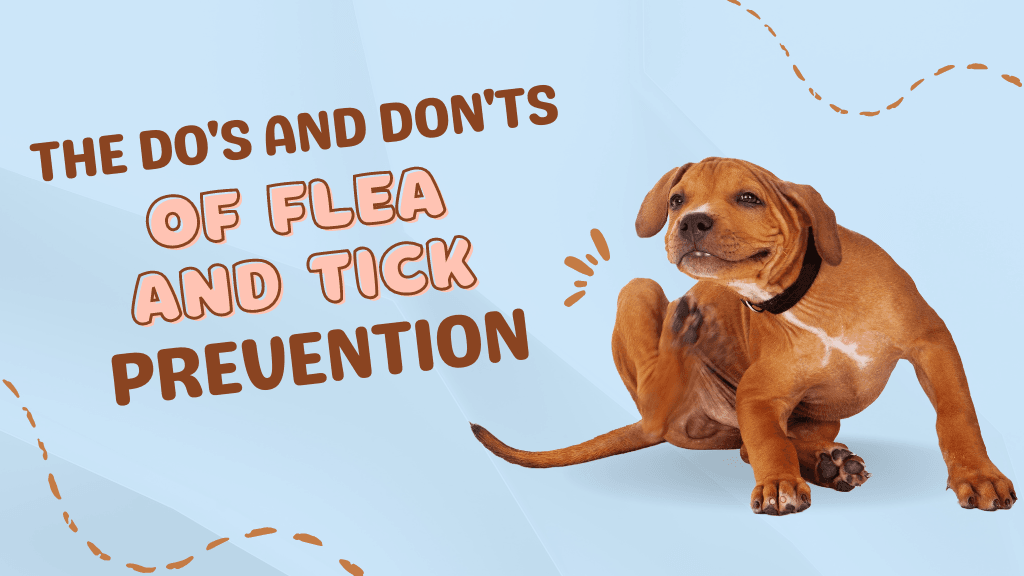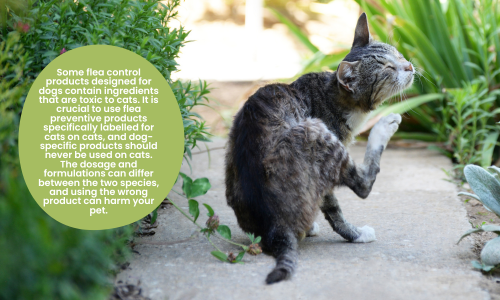The Do’s and Don’ts of Flea and Tick Prevention
)
As a pet owner, do you stick to a strict parasite control routine for your pet, or are you sometimes a few days (or even a few weeks) late with the administration?
Whilst we understand that “life happens”, our team wants to gently remind owners about the importance of a solid external parasite control routine for dogs and cats. Here’s how to keep your pet properly protected against fleas and ticks.
Why should pets be protected against fleas?
Fleas are particularly common in warm weather but can also reproduce in warm indoor environments throughout the year.
In many cats and dogs, flea bites will cause mild to moderate skin irritation. However, for dogs and cats with an allergy to flea saliva, flea bites can lead to severe inflammation and discomfort. Additionally, pets may scratch or chew excessively at any irritated areas, potentially triggering secondary bacterial skin infections requiring veterinary treatment.
As well as causing skin problems, fleas can also transmit Dipylidium tapeworms and other infectious diseases.


Why is it important to protect your pet against ticks?
Whilst the paralysis tick season has traditionally run from early spring through summer, some areas of Queensland now see paralysis cases all year round.
Tick paralysis is caused by the toxin of the Ixodes tick, and can affect both dogs and cats. Affected pets develop progressive muscle weakness, leading to an inability to walk, vomiting or regurgitation, and severe breathing difficulties which can sadly prove fatal.
Brown dog ticks infected with Ehrlichia canis (a bacteria) have now also been detected in Queensland, as well as Western Australia, the Northern Territory, and South Australia. Erhlichiosis infection is passed to dogs via the bites of infected ticks, leading to unwellness symptoms including fever, lethargy, bleeding disorders and potential death.
The Do’s and Don’ts of flea and tick prevention
To properly protect your pet from fleas and ticks (and all their associated nasty symptoms), do:
- Ensure you have selected the correct weight range product for your pet’s current weight (in case they’ve gained a few sneaky kg’s). If they’re sitting at the upper edge of a weight range, check with our team about potentially switching to a higher-range product (which is generally safe) to ensure protection
- Read label instructions carefully regarding how to properly apply topical products, and how long you may need to temporarily avoid bathing your pet for
- Have a chat with our vets regarding the best options for control if your pet has a sensitive stomach, is a breeding animal, or has a history of seizures
- Check with our team regarding safe and effective product combinations for flea, tick, heartworm and intestinal worm prevention in your pet
- Ask our vets about safe combinations of tick-repellent and control products if you live near bushland
- Check your pet daily for ticks if you live in or visit areas where ticks are known to be active
To keep your pet safely protected with minimal side effects, don’t:
- Forget to keep their protection up to date according to the product labelling. Set calendar reminders on specific dates to help you remember!
- Use products labelled for dogs on cats, as some dog products may cause toxicity in cats
- Stop administering the product during winter. Your pet should be protected all year round!
If you have any further questions about protecting your pet against harmful parasitic hitchhikers, consult our friendly team or phone us on 07 5593 8395.
- Ensure you have selected the correct weight range product for your pet’s current weight (in case they’ve gained a few sneaky kg’s). If they’re sitting at the upper edge of a weight range, check with our team about potentially switching to a higher-range product (which is generally safe) to ensure protection
- Read label instructions carefully regarding how to properly apply topical products, and how long you may need to temporarily avoid bathing your pet for
- Have a chat with our vets regarding the best options for control if your pet has a sensitive stomach, is a breeding animal, or has a history of seizures
- Check with our team regarding safe and effective product combinations for flea, tick, heartworm and intestinal worm prevention in your pet
- Ask our vets about safe combinations of tick-repellent and control products if you live near bushland
- Check your pet daily for ticks if you live in or visit areas where ticks are known to be active
To keep your pet safely protected with minimal side effects, don’t:
- Forget to keep their protection up to date according to the product labelling. Set calendar reminders on specific dates to help you remember!
- Use products labelled for dogs on cats, as some dog products may cause toxicity in cats
- Stop administering the product during winter. Your pet should be protected all year round!
If you have any further questions about protecting your pet against harmful parasitic hitchhikers, consult our friendly team or phone us on 07 5593 8395.
| Tags:Client InformationHealth AdviceProactive Pet Care |
&geometry(140x140))

